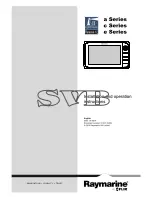
PEDIATRIC HAL®
|
User Guide
22 | Working with Pediatric HAL
Intubation Sensor
•
Sensors in the airway detect the placement of the endotracheal tube.
•
If the endotracheal tube is inserted too deep, the left lung will automatically
be disabled to demonstrate right mainstem intubation.
•
Once the position of the endotracheal tube is corrected the left lung will be enabled to allow for chest rise.
Gastric Distension
•
When performing CPR, excessive
ventilation of the esophagus will lead
to visible gastric distension.
•
To relieve the gastric distension, gently
press down on the stomach.
Airway Sounds
•
The simulator produces audible throat sounds.
•
Locate the Throat Sounds in the Airway section
to change the sound type and adjust the volume.
Auscultate using a standard stethoscope.
Cricothyrotomy / Tracheostomy
Providers can perform a cricothyrotomy through
the precut opening on the neck skin. The airway
itself features an opening covered with tape that
simulates the soft cricothyroid membrane.
CAUTION: Avoid using surgical tools to cut the neck skin. The precut
opening allows the insertion of most medical devices.
Summary of Contents for PEDIATRIC HAL S3004
Page 2: ......
















































